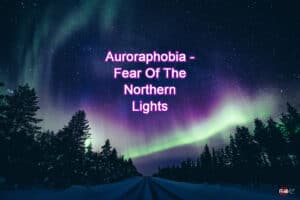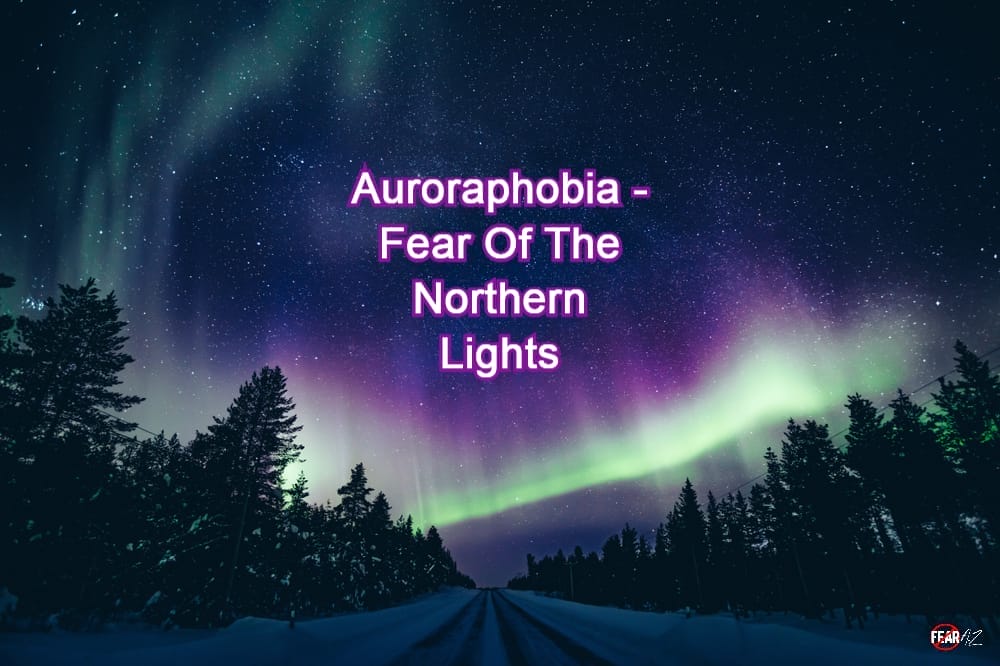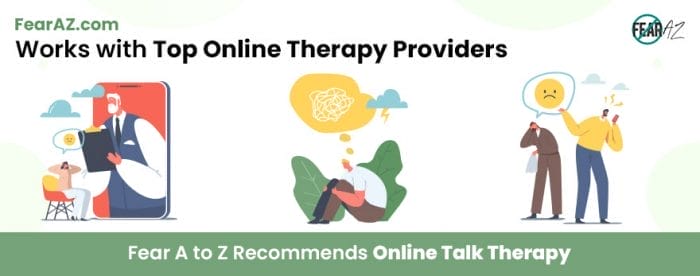Share This Article
Beautiful, Mystical and to Some, Scary: The Northern Lights
While most people love the northern lights, are you afraid of them? Does even thinking about the aurora borealis send a chill down your spine?
Would you do everything in your power to avoid seeing the northern lights, or even hearing about them? Does the possibility of seeing the northern lights give you panic attacks?
If so, you may have auroraphobia, the fear of northern lights. If you think this fear is silly, take a look at the irrational fears list to learn about different kinds of fears and phobias people face in their daily lives.
Living with fear is hard, and it can have a negative effect on your life. However, thanks to advancements in the medical field, most phobias are now treatable. You can reach out to friends, family, and even professionals for a helping hand to overcome your fear.

What Is Auroraphobia?
A phenomenon called the aurora frequently occurs at both the north and south poles. These light shows, which can be viewed overhead, are characterized by a display of bright, fluctuating colors. Auroraphobia is defined as the irrational fear of aurora. One may fear the northern lights (aurora borealis), the southern lights (aurora australis), or have a fear of aurora in general. We’ll focus on the northern lights for this article.
Northern lights are most commonly seen in Finland, Norway, Sweden, New Zealand, Greenland, and northern Canada. Auroras are often breathtaking to view and people travel long distances just to experience them. However, this light show can be a source of distress for some, sometimes even leading to panic attacks.
Like most phobics, auroraphobics try to avoid the source of their discomfort. Some may even make major life decisions, such as moving away from areas where the aurora occurs. This gives them a false belief they are safe; however, it often does more harm than good, because avoidance reinforces the fear.
Even after making life changes, seeing a photo or video, or hearing about auroras can still trigger symptoms. Hence, avoidance is not the solution. Treatment is the answer.
Everything You Need to Know about Auroraphobia
Auroraphobia is different from a mere dislike of northern lights, it is a straight-out fear of being harmed by the lights.
But why are people afraid of the northern lights?
Some people are afraid of the northern lights because they see it as a bridge—a bridge that connects heaven and Earth. They believe it opens a route for contact with those who have died.
Other are afraid because they think the lights can harm them. But, is that true? Can auroras harm humans?
Auroras happen when electrically charged particles collide with one another, so it’s natural for people to fear them. However, auroras are so high up in the sky that they don’t pose a threat to humans, although they may have negative effects on technology and infrastructure. Auroras are generally harmless. You can even view them with your naked eye.
What happens if you touch an aurora? You cannot touch the aurora. It is made up of primarily gasses and photons. Auroras also occur at the boundaries of space, too high for those of us on Earth to touch.
What Causes Auroraphobia?
Like most specific phobias, it’s difficult to pinpoint the exact time and cause of the onset of auroraphobia. However, there are some theories when it comes to the causes of phobias.
It could be genetic, as mental illnesses are known to run in families. Also, if a person has one phobia, the probability of acquiring another phobia is high.
Moreover, the environment in which we grow up, the stories we are told, and our beliefs play a role in the development of auroraphobia.
Many people refer to auroras as “dancing spirits,” and numerous scary tales revolve around this beautiful phenomenon. So, it’s no wonder that one may associate it with evil or bad spirits and develop a dislike or fear of them. Later, that dislike may develop into a phobia.
Also, if someone faces a traumatic event (not necessarily relating to auroras), it can affect them, making them more susceptible to anxiety or mental illnesses.
Symptoms of Auroraphobia
Symptoms vary from one individual to another. Depending on the severity and advancement of the phobia, symptoms can range from mild to severe.
While some individuals may be able to go about their daily lives by making small changes, others may find that the phobia disrupts their lives and struggle on a daily basis.
The symptoms can be either physical or psychological.
Physical Symptoms
- Trembling
- Sweating
- Irregular heartbeat
- Nausea
- Vomiting
- Dizziness
- Headache
- High blood pressure
- Ringing or buzzing in the ear
- Dry mouth
- Hyperventilation
Psychological Symptoms
- Panic attacks
- Anxiety at the mention of aurora
- Fear of getting hurt
- Fear of death
- Confusion, irritability, and mood swings
Treatment for Auroraphobia
There is no definitive treatment for specific phobias, including auroraphobia. However, there is a list of therapies you can use to overcome the fear of the northern lights. Why not first begin with self-help methods?
Self-Help
Realizing and accepting your medical state is the first step toward helping yourself. You know what you’re going through, and it is you who can help yourself best.
Keeping track of your triggers, symptoms, and panic episodes will help you track your progress. Additionally, you can keep track of the steps you take and the degree of improvement you see.
You can try relaxation techniques, such as breathing, yoga, meditation, counting from 100 to 1, and so on. These relaxation techniques help you calm down and rationalize your thoughts.
Exposure therapy is a professional therapy practice, but you are also free to try it. Begin by browsing photos of the northern lights and looking at them for a few seconds at a time. Encourage yourself to look at photos a little longer each session. If at the end of the session you still feel safe and calm, try watching a video of the aurora. If at any time you begin to feel anxious, pause the activity and try again another day.
Professional Therapy
If the self-help methods you’re relying on aren’t doing the trick, consider seeking professional help.
Mental health professionals are experts in the field. They carefully evaluate your state and define the best course of treatment.
A professional will help you get to the root of your phobia and desensitize you to the triggers using one or more of the following therapies:
- Cognitive behavioral therapy (CBT)
- Mindfulness-based stress reduction (MBSR)
- Exposure therapy
- Dialectical behavioral therapy (DBT)
Medication
In severe cases, therapists may prescribe medication for a brief time.
Medication is taken alongside other therapy methods and tapered once the client starts responding to treatment. Antidepressants and anti-anxiety drugs are generally used to help with the symptoms of the phobia.
How to Cope with Auroraphobia
Living with a phobia is not easy, and even after treatment, there is no guarantee you’ll completely overcome your phobia. However, you will feel better and be able to better manage your fear and symptoms.
Talk to someone you trust, try self-help methods, or seek professional treatment to lessen your fears.
Conclusion
Auroraphobia, the fear of the northern lights, can limit your life. However, you can take simple steps to manage your symptoms and lead a more normal life.




